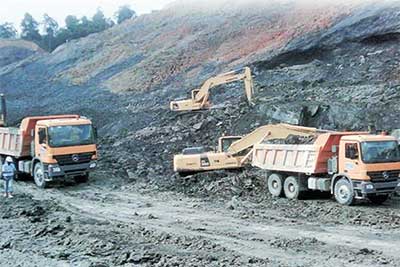Why in news?
Captive mines can now sell up to 50% of output.
About Mines and Minerals (Regulation and Development) Act (1957)
- The Mines and Minerals (Regulation and Development) Act (1957) is an Act of the Parliament of India enacted to regulate the mining sector in India.
- The Act is applicable to all mineral except minor minerals and atomic minerals.
- The Act, 1957 was broadly amended earlier in 2015 to bring about several reforms in the mineral sector, particularly requiring auction of mineral concessions to recuperate transparency and introducing stringent penalty for illegal mining. Subsequently, the Act, 1957 was further amended in 2016 and 2020 to permit transfer of leases for non-auctioned captive mines and to deal with the emergent issue of expiry of leases.
Salient features of the Mines and Minerals (Regulation and Development) amendment act 2021
- Removal of restriction on end-use of minerals: It provides that no mine will be reserved for particular end-use.
- Sale of minerals by captive mines: It provides that captive mines (other than atomic minerals) may sell up to 50% of their annual mineral production in the open market after meeting their own needs. But they need to pay the royalty to the central government.
- Auction by the central government in certain cases: It empowers the central government to specify a time period for completion of the auction process in consultation with the state government. If the state government is unable to complete the auction process within this period, the auctions may be conducted by the central government.
Significance:
- This will speed up the process of implementation of projects, ease of doing business, simplification of procedure and benefit all the parties in areas where minerals are located.
- It will create an efficient energy market and bring in more competition as well as reduce coal imports.
- It might also put an end to Coal India Ltd’s monopoly in the sector.
- It would also help India gain access to high-end technology for underground mining used by miners across the globe.
Captive Mines: Captive mines are the mines that are owned by companies. The coal or mineral produced from these mines is for the exclusive use of the owner company of the mines. The company cannot sell coal or mineral outside. Some electricity generation companies used to have captive mines.
Non- Captive Mines: Non-captive Mines are mines from which the produced coals of minerals could be used for its own consumption and as well as for selling it.
Source-
- Indian Express
- PIB









